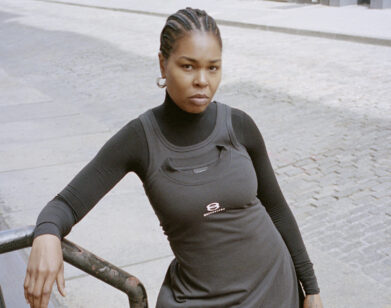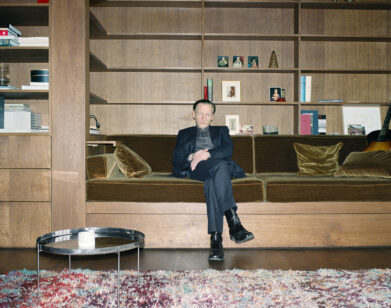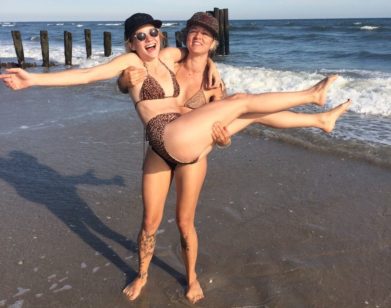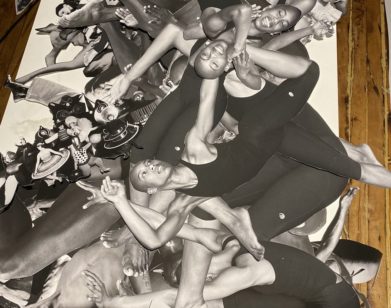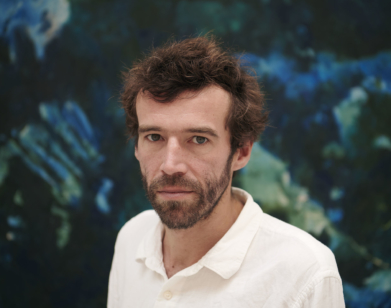Artist Stan Douglas Wants to Take You to Another Earth
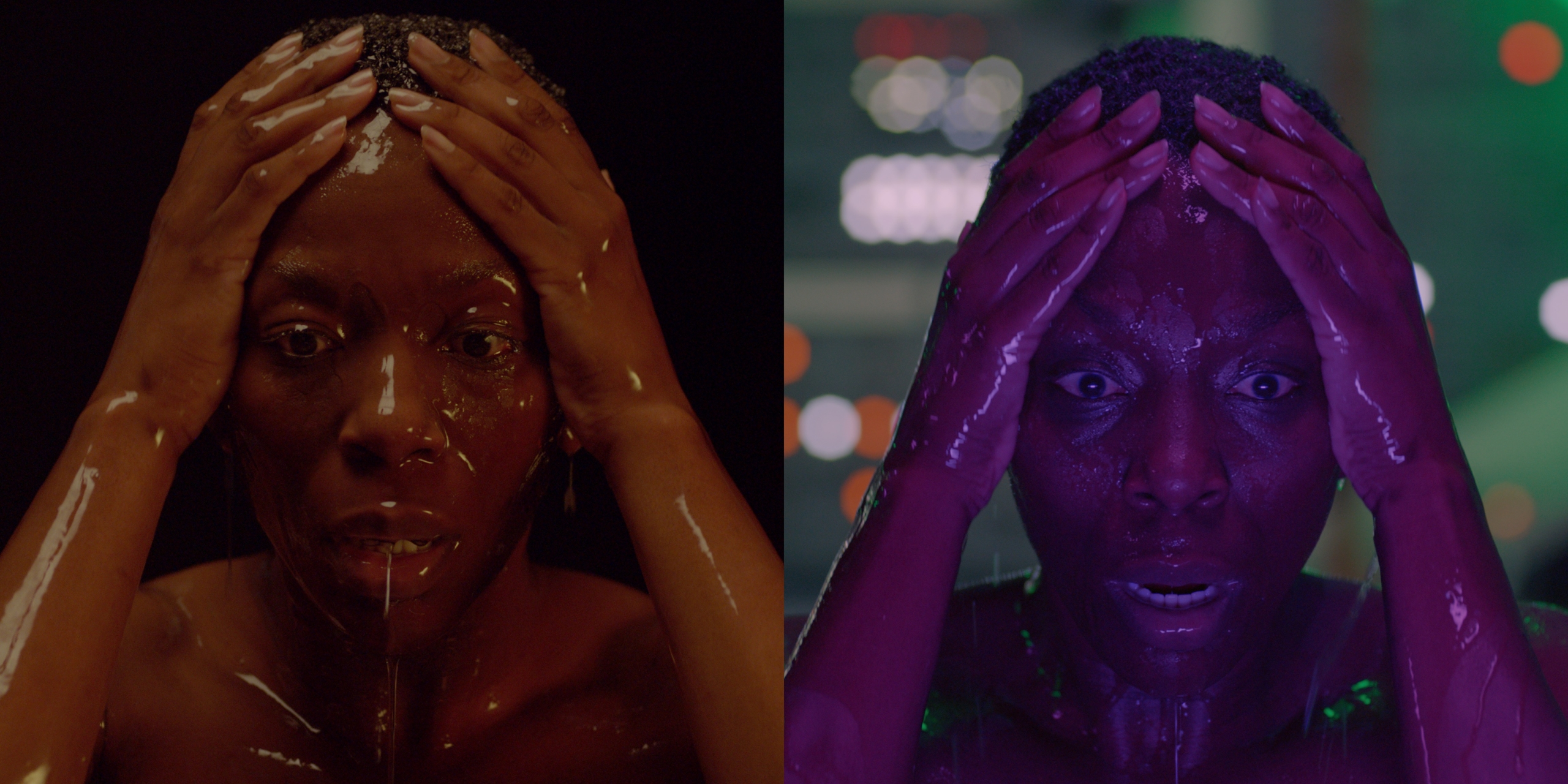
Stan Douglas, Still from Doppelgänger, 2019. Courtesy the artist, Victoria Miro, and David Zwirner.
Stan Douglas, the Canadian video artist and photographer, likes to think about when things go awry. This is the premise of his video installation, Doppelgänger, currently on view at David Zwirner in New York and Victoria Miro in London. As its title suggests, the work, which premiered at the Venice Biennale in 2019, is a tale of doubles. Douglas’s video, projected on two translucent screens, visible on both sides, centers around two parallel realities—two Earths orbiting at opposite ends of the galaxy, unaware that they’re identical to each other.
On each Earth, an astronaut named Alice is copied via stem cells and teleported to a spaceship light-years away, bound for a distant planet. Scientists at Mission Control are shocked, however, when the vessels, thought to be progressing deep into the cosmos, inexplicably return to Earth’s orbit. Unbeknownst to them, the Alice clones have actually crossed the galaxy, arriving on the Earth opposite from that which they emerged. The astronomers, a political official, and the original Alice together grapple with how to treat this uncanny other. In one case, Douglas says, “Alice is treated like a returning citizen who needs comfort, B12 injections, and bed rest. The other one is treated like a dangerous alien who gets quarantined, interrogated, and shot up with sodium Pentothal.” For Douglas, the work functions as an allegory for immigration, pointing to the artist’s penchant for deploying speculative fiction as a mode of social inquiry.
2020 finds Douglas’s career in the midst of its own thrilling saga: back-to-back openings on two continents, an evening talk at the Guggenheim Museum, and a career-changing announcement; Douglas will be representing Canada at the next Venice Biennale. Amidst all that, Interview sat down with the artist to discuss Doppelgänger, Star Trek, and his fascination with the hypothetical.
———
ELLA HUZENIS: Tell me about your process in conceiving Doppelgänger. What inspired you?
STAN DOUGLAS: I was in Berlin just having premiered in Munich my play Helen Lawrence, and I saw this person in Rosa-Luxemburg Platz in East Berlin. I had the feeling that this person was an East Berliner just by their posture, their composure, their clothing, and just a general attitude. I don’t know for sure, but that was my suspicion. But I had this uncanny feeling that this person is in East Berlin but he feels out of place in East Berlin. He’s from East Germany, but looks out of place in East Germany. Which is just funny, that condition. And that sort of inspired me, this idea of “who belongs where?” And how is identity established from one person to another?
HUZENIS: So, what is your background in science fiction? Has that been a long interest for you?
DOUGLAS: I’m a big fan. I remember way back when, I’d be watching Star Trek, my mother’s boyfriend would walk into the room, and go, “Have they been taken over yet?” And I said, “I notice a formula, just don’t remind me. Let me be surprised.” When you see an opera, you know what the outcome is going to be but you suspend disbelief and let it flow over you. Star Trek is the same way. In fact, the lighting in Star Trek kind of inspired what you see in Doppelgänger. I’m not sure if it was done just to make it seem strange, but I got a feeling that, because old color TVs were kind of crude instruments, they had very saturated color in those TV shows. I sort of appropriate that look for what you see in Doppelgänger, and there’s sort of a code to it as well. When we’re on the original Earth, we’re with the original Alice, everything is like a terrestrial house, everything is blue and yellow. And when we’re with the duplicate Alice, things are magenta and green. So these sort of color codes tell you what kind of location you’re in.
HUZENIS: Many artists have looked to science fiction as a lens through which to examine broader social issues. How do you relate to that history of the genre?
DOUGLAS: I can’t predict the future, so in a way, my science fiction—like everything else, like historical things—is an allegory of the present. I guess the main thing I was going for is an overall vibe of dread and uncertainty. But I kind of like for people to discover things by themselves. It’s much more enjoyable when you look at something, you look at a structure, and then you imagine how things are working. You have an analogy of what you know and how you’ve learned things and how you’ve lived your life.
HUZENIS: And while the work examines these two alternate scenarios, it still leaves open a lot of possibilities. It leaves viewers with so many questions about how such a scenario could transpire and how it would look. Talk about planning out Doppelgänger.
DOUGLAS: Many things had to be improvised on the day. Certain technical devices, certain parts of the scenery didn’t work the way I thought they would, so I had to make up things on the day of. On the day you’re shooting, you have the best-laid plans, and some things work, some things don’t. Even behind the people at Mission Control, behind them there was supposed to be plexiglass. I thought it would be reflective plexiglass, in which case we could have a reflection of what we were seeing of the control screens. But it turned out to be somewhat opaque plexiglass, which was sort of like, “What do I do with this?” But then I realized, if I could have some backlighting on that, that kind of added a very creepy, almost ominous feeling to those scenes, seeing these figures who appear, disappear, reappear, and sometimes double in the background. So often mistakes turn into possibilities, too.
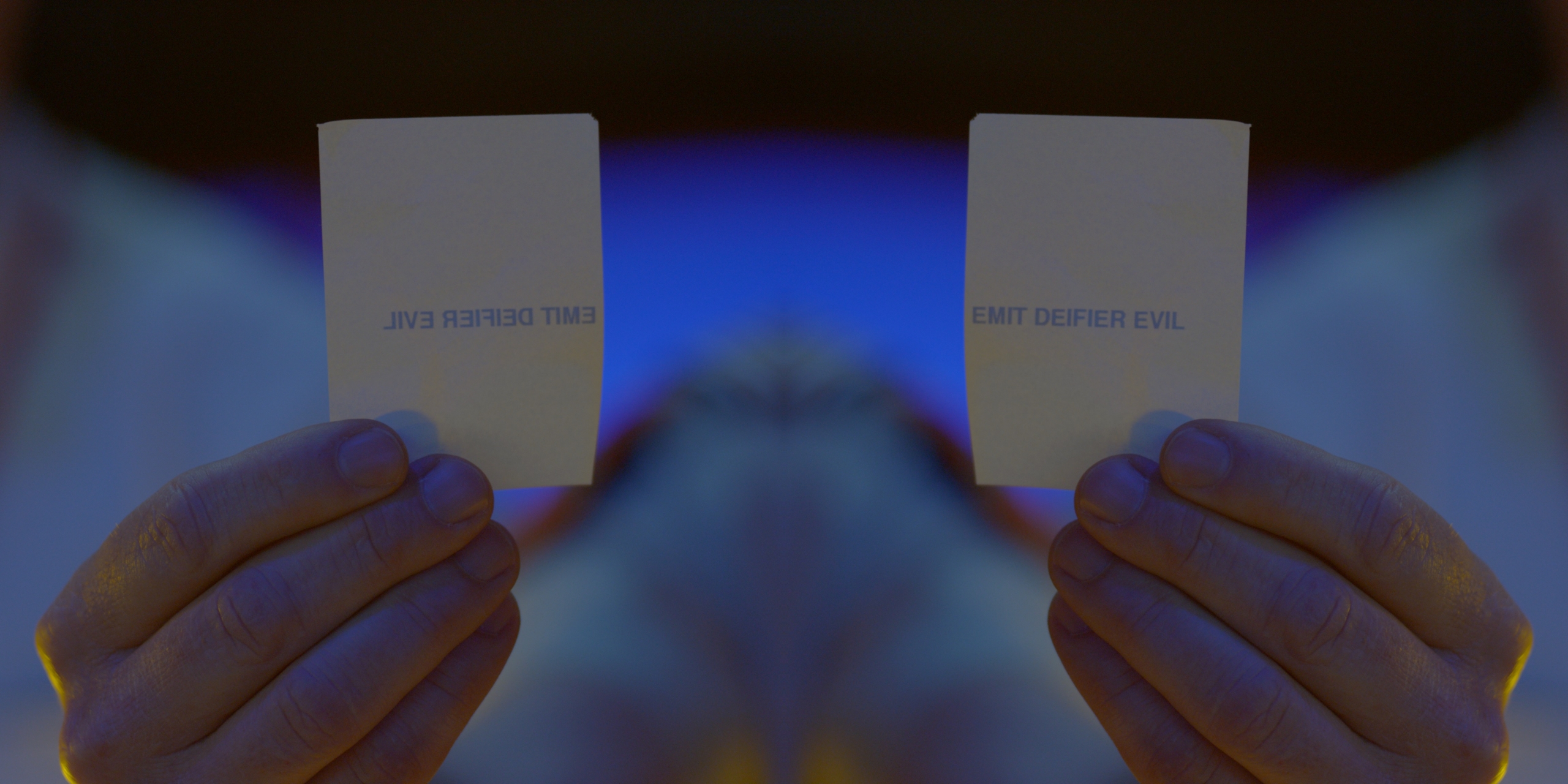
Stan Douglas, Still from Doppelgänger, 2019. Courtesy the artist, Victoria Miro, and David Zwirner.
HUZENIS: I want to turn back to the ominous affective qualities of the work. There’s a somewhat unsettling moment in the video when the characters discuss what might have happened had the experiment gone as they’d expected. The Alice copy could be living alone on this totally uninhabited planet …
DOUGLAS: It’s more her intrepidness. She is going to do this thing. There is a very slight chance that everything will be okay. We don’t really know what the planet is like. So when she gets there, either she’ll be able to land and things will be okay, or it will be uninhabitable and she’s alone and will die when her food runs out. In a way, this is sort of this experience of immigration too, because in immigration, you’ll take the risk of going to an unknown place, and just make a new life for yourself. Immigrants are heroes because they get there and they will do everything, every skill they have, every bit of energy they have to make that new life and to make the place they live a better place to be. That’s why immigration is such an important thing. Especially in a new world where we’re all—except for one group of people, the indigenous people—we’re all based on that history.
Alice is the kind of person who would be going there in the hopes that things will work out. So she will teleport there, and if things don’t work out, okay, things didn’t work out. But if they do, great, she can actually discover or explore a brand new world.
HUZENIS: In many discussions of your work, you talked about your interest in where things go wrong and the different decisions people can make in those moments. In general, what attracts you to that kind of speculative exercise, and what do you hope to discover through it in Doppelgänger?
DOUGLAS: Well, I can’t remember the quote exactly, or who it was by, but it’s this idea that “the past is never really passed.” The past is always with us. We’re always continuing the past in the present. But there’s a story which may be apocryphal which I read in a book by Susan Buck-Morss where she talks about how when [the science fiction writer] H.G. Wells worked for the London Times, he interviewed Vladimir Ilyich Lenin, and at one point Lenin says, “I can’t wait for the day when we make contact with an alien intelligence because then we’ll realize our way of life is not the only possibility.”
HUZENIS: Do you think of exploring alternative possibilities for what life can be as a kind of social or political mission of your practice?
DOUGLAS: Open possibilities. Start with a question of saying, this is how it should be, this is good, this is bad. But it’s important to remind people that these possibilities can be thought through. And if you’re able to imagine an alternative to what we’re enduring right now, this is the little thing that art can contribute to the more global conversation.
HUZENIS: Do you often contemplate these issues in the context of your own life, in examining your own ways of being?
DOUGLAS: One key thing for me in understanding all this was reading a little book by Samuel Beckett called Proust. He talks about Proust’s idea of habit, and there is a funny quote where he says, “Habit is the ballast which tethers the dog to its vomit.” Which is a weird perversion of a quote from the Bible. He’s talking about how habit allows us to find comfort from the horror of the real. If we’re paying attention to what’s around us, and what’s going on, the complexity of intersubjectivity, the bizarreness of our being able to pick something up and move it around in space, if we really attend to that we’ll go crazy. But we have habits to allow us to drive a car, walk down the street, read a book, and that kind of thing.
But occasionally, something breaks that habit and we’re forced to actually deal with that, either by reinforcing habit more vehemently or finding a new solution to the way we interact with the world. And this happens on a bigger scale as well. 9/11, where for the first time there was a foreign attack on US soil, the way in which the United States dealt with that is a clear indication of their relationship to diplomatic habit.
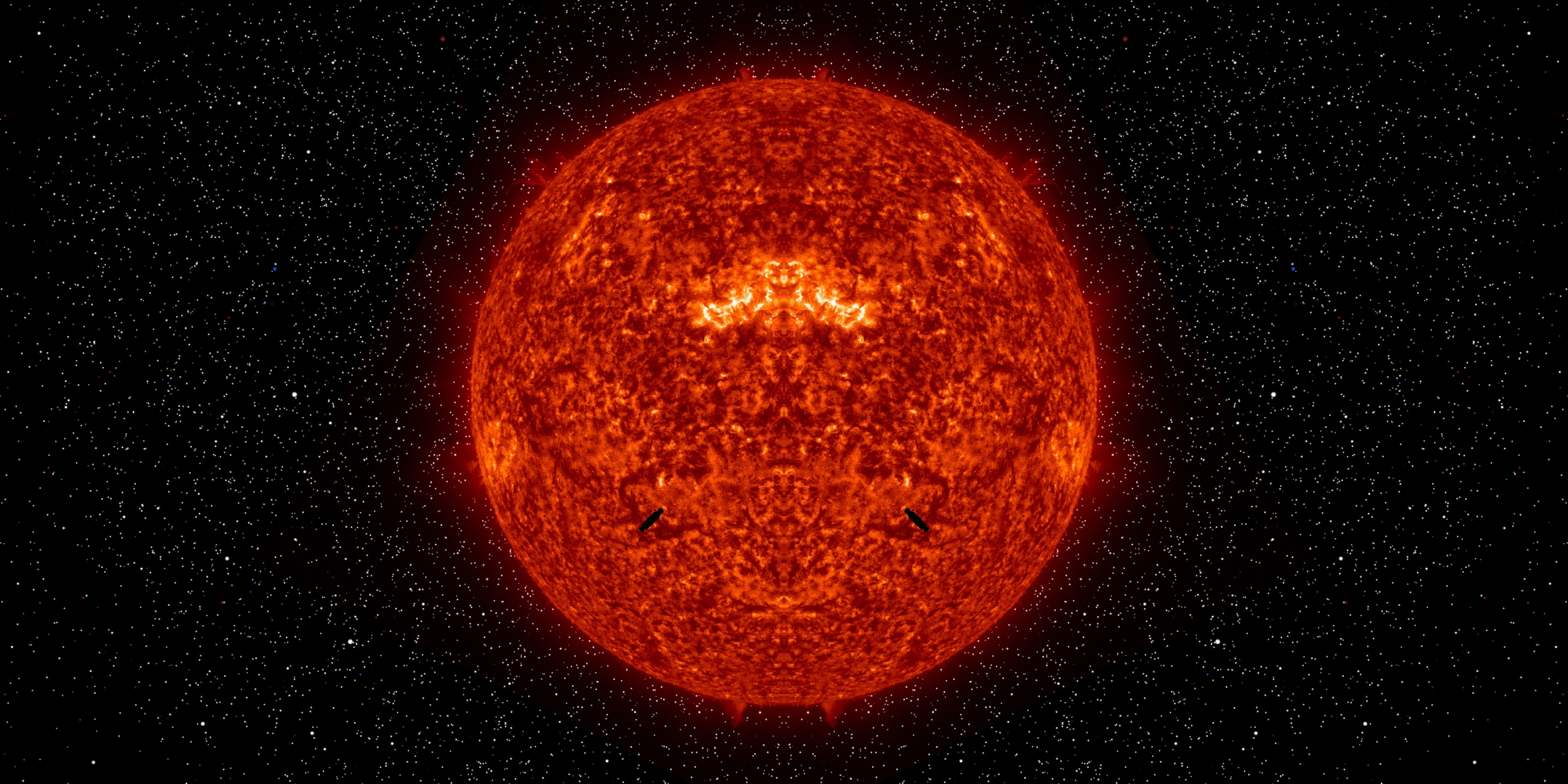
Stan Douglas, Still from Doppelgänger, 2019. Courtesy the artist, Victoria Miro, and David Zwirner.
HUZENIS: In the context of your own career, is there any particular moment that you would say was transformative?
DOUGLAS: It’s a question of being at the right place at the right time, doing the right work at the right time, given that I a long time ago knew a guy named Jan Hoet who was the director of a museum in Ghent called S.M.A.K. He came to my studio when I was first out of art school, saw this work. He wanted to have it put in an exhibition, but it was actually censored by one of his curators. He felt very awful about that, very apologetic, and he wrote me a letter about that and I said “Yeah, what the hell.” And then I was in Sydney for the Sydney Biennale in 1990, and there he was. He says “Stan, you must be the next documenter.” It was that chance encounter that gave me a platform to show my first video work in a context where video was being shown with an equal stature to painting and sculpture. Because typically in those shows, video would be in an airless room in the corner of a museum, but here it was, front and center. And in that context, I got sudden visibility I could have never had before.
HUZENIS: And it was just announced you’ll be representing Canada in the next Venice Biennale. What was your reaction to that news? What does that honor mean to you?
DOUGLAS: I guess I should find an answer to that because I’m asked this question a lot.
It feels great to do that, but … I’m not really a nationalist per se. I don’t think the idea of nations is always that healthy. It has led to a lot of problems. But in Venice, it is a legacy of old European empires, if you look at the layout of the pavilions, which ones were big, which ones were small. And so, the work I want to make for that will have a more global or internationalist reach or subject to avoid this idea of just representing yourself. I’m interested in things which connect our different cultures, or may be common to our cultures. And I have some ideas which I won’t tell you.

